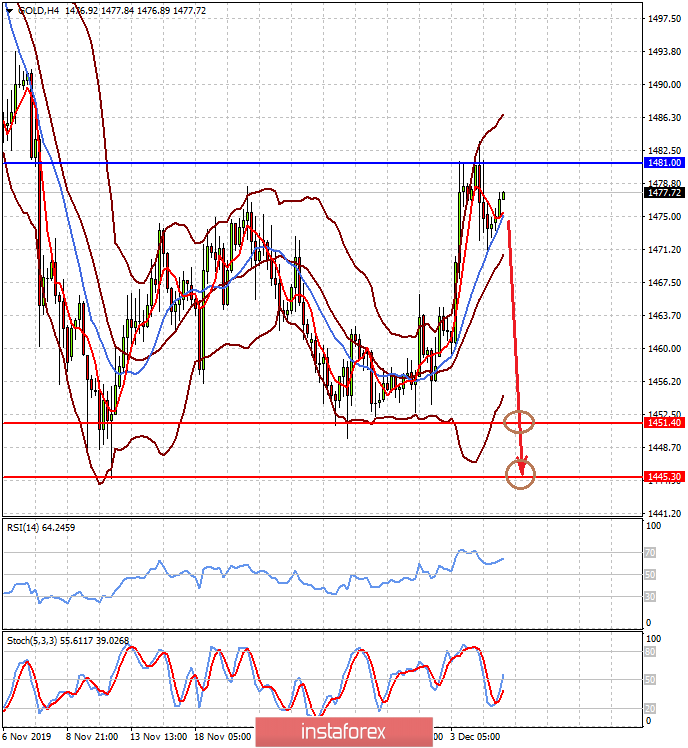As expected, D. Trump is playing his game, trying to put pressure on China in the desire to force him to go to a more favorable terms of the deal for America.
The frank and undisguised policy of the "carrot and stick" (both the offer of reward and the threat of punishment), professed by the American president in relation to trading partners, as well as US military and political allies, continues to be the main impulse of the dynamics of world financial markets. On Wednesday, what is called "on the blue eye" Trump, said that negotiations between Washington and Beijing are continuing and are going "very well", as if nothing had happened at the meeting to solve problems of NATO. Of course, markets that had already buried their hopes that a trade deal would be reached were excited again and experienced a small, but still a wave of optimism, which manifested itself in an increase in demand for risky assets.
Therefore, the local stock market in the United States interrupted the correction in the wake of this short statement by the American president. Government bond yields, in turn, rose sharply, and the demand for protective assets fell accordingly, while the US dollar received support, although short-term.
But is it worth counting on the fact that the situation has really changed radically? In our opinion, there is no reason to hope so far. Apparently, trade negotiations are really extremely difficult. It seems that the American side is not able to persuade the Chinese to their version of the deal, which was the reason for political pressure on Beijing in the form of support for the opposition in Hong Kong.
Assessing this state of affairs, it can be assumed that the markets will continue to balance until December 15, when new customs duties from both America and China begin to operate or are frozen again.
In the currency exchange market, the US dollar is completely influenced by US-Chinese negotiations and economic statistics. Positive or negative news on a trade transaction either locally supports the dollar, or also exerts limited pressure on it.
As for the impact of economic data, they are viewed through the prism of future of the Fed's action. So, for example, the employment values released on Wednesday from ADP turned out to be significantly lower than expected and showed their growth by only 67,000 against the forecast of 140,000. Against this background, the dollar fell to a basket of major currencies, but continues to be supported by hopes for the US-Chinese trade deal. Now, the attention of the market will be focused to the Friday employment figures from the US Department of Labor. If they do not disappoint and will not be followed by another negative negotiation, then this will provide significant support to the dollar.
Forecast of the day:
EUR/USD is consolidating in the range of 1.1065-1.1090. We expect a short-term movement tomorrow amid the publication of data on employment in the States. In this case, the price will either increase negatively to 1.1175, or, conversely, the pair will decline to 1.0990. Today, the pair may continue to consolidate, approximately, in the above range if there are no important statements on the deal between the United States and China.
Gold remains hostage to trade negotiations between the United States and China. Thus, we continue to hope for Trump's common sense and believe that an agreement will be concluded. We also expect a price reversal and the resumption of its decline to 1451.40, and then to 1445.30.























